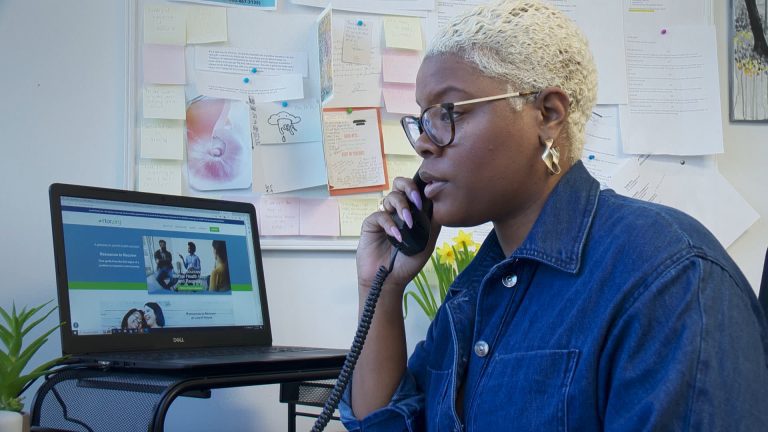Maybe no one knows what happened to you. Or maybe too many people know, but no one gets how it still affects you. Healing after abuse is deeply personal, and it rarely makes sense to people who haven’t lived it.
You’ve likely done what you could to survive, but surviving is not the same as healing. Healing takes a different kind of strength. It takes the right support and spaces where you can be yourself. You don’t have to be “over it” to start moving forward. You just have to be open to the idea that things can feel better than they do right now.
In this article, you’ll find survivor-focused mental health resources and honest advice for starting that healing process.
Acknowledge What You’ve Lived Through
One of the hardest steps in healing from trauma is naming what happened. Whether the abuse came from a partner, family member, caregiver, or someone else, it wasn’t your fault. That may take some time to fully accept, especially if you were previously led to believe otherwise.
But it is the truth. Survivors often carry guilt, shame, or confusion. Speaking to a trauma-informed therapist can help you begin to untangle those feelings and start to separate who you are from what someone else did to you.
In situations where abuse happens in a care setting, such as a nursing home, you might also feel anger, helplessness, or both. Those reactions are valid. Seeking emotional help is essential, but for some, knowing your rights is also crucial.
Finding the Right Kind of Support
Not every therapist will be the right fit, and that’s okay. What matters is finding someone who can listen without judgment and who understands how trauma works. You may feel more comfortable with a counselor who focuses on PTSD (post-traumatic stress disorder), abuse recovery, or complex trauma.
If you’re not sure where to look, national organizations such as RAINN (Rape, Abuse & Incest National Network) and the National Domestic Violence Hotline offer connections to local resources.
In addition to professional help, peer support can be a profoundly healing experience. Sometimes, you just need to speak with others who have lived through something similar. Support groups, whether online or in person, create a space for shared experiences, which can help reduce isolation and reassure you that you are not alone.
When Legal Action Is Part of Healing
For some survivors, healing involves more than therapy or time. It also means holding someone or something accountable. That might involve legal action, especially if the abuse took place in an institutional setting.
For example, if you or someone you love experienced neglect or abuse in a nursing home, understanding your legal rights can make a difference. While this kind of step can feel overwhelming, many people find that having the option to act gives them a greater sense of clarity and control during an uncertain time.
You are not only surviving what happened. You are also choosing how to move through it now. Speaking up in any form, whether publicly or privately, is one more way to reclaim your voice.
Addressing the Deep Impact
Trauma doesn’t just live in the mind. It can settle into your body, disrupt your concentration, and hinder your ability to connect with others. You might feel physical tension, have memory issues, or find it hard to trust people. None of this means you are weak. It is your body’s natural response to unsafe experiences.
Therapies such as EMDR (Eye Movement Desensitization and Reprocessing), somatic experiencing, and trauma-focused cognitive behavioral therapy work to gently shift how trauma is stored in your body and brain. These approaches are not one-size-fits-all, but many survivors find them helpful in reducing emotional overwhelm tied to past events.
Building Your Own Timeline
Your healing will not look like anyone else’s, and it’s essential to accept that. Some days will feel steady. Others may bring up feelings you thought were behind you. This does not mean you’re going backward. It simply means you are still processing. There is no race, no clock you have to beat. Take all the time you need.
Some people turn to journaling, art, or music to express what’s hard to say out loud. Others may prefer walking, stretching, or mindful movement. What brings comfort to one person might not work for another. That is perfectly normal. You get to figure it out as you go.
Concluding Thoughts
Your healing belongs to you. It might be messy or slow. Still, every little effort you make counts more than you know. You have already faced something incredibly hard. There is no need to rush and nothing to prove. Keep choosing yourself, one step at a time. Whether that means having a conversation or sitting quietly, it is all part of your progress. You are not broken. You are healing. Most importantly, you are not alone.
About the Author: Beth Kim is a content writer for Rosenfeld Injury Lawyers and is dedicated to creating supportive and informative content for survivors of abuse. With a focus on mental health and healing, they aim to provide resources and guidance to those on their recovery journey. Their work emphasizes the importance of understanding, compassion, and empowerment for individuals overcoming trauma.
Photo by Liza Summer: https://www.pexels.com/photo/crop-woman-tapping-shoulder-of-frustrated-female-friend-6383158/
The opinions and views expressed in any guest blog post do not necessarily reflect those of www.rtor.org or its sponsor, Laurel House, Inc. The author and www.rtor.org have no affiliations with any products or services mentioned in the article or linked to therein. Guest Authors may have affiliations to products mentioned or linked to in their author bios.
Recommended for You
- Dealing With Toxic Family Members: A Survival Guide for Family Gatherings - December 22, 2025
- When to Seek Help from a Child Psychiatrist: 6 Signs Your Child Needs Support - December 19, 2025
- When Everything Feels Urgent: How Clarity Protects Your Mental Health - December 18, 2025







